P2
1/54
Earn XP
Description and Tags
Name | Mastery | Learn | Test | Matching | Spaced |
|---|
No study sessions yet.
55 Terms
SCALARS
No direction
Speed distance mass
VECTORS
Have direction
Velocity displacement force
DISTANCE SPEED TIME
Distance = speed x time
ACCELERATION
Acceleration how quickly the velocity is changing
Acceleration FORMULA
Change in velocity (m/s) / time ( s )
Change in velocity = final velocity - initial velocity
UNIFORM ACCELERATION
(final velocity)* - (initial velocity)*= 2 x acceleration x distance
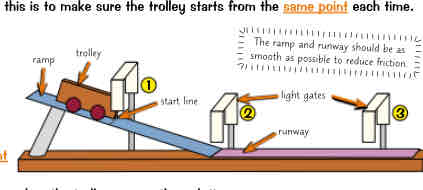
Acceleration practical
measure distance of light gate 12 23
Let it go down the ramp it will accelerate then reaching runway travels constant speed
Each light gate will record time
Gates 12 find avg speed on ramp
Gates 23 give speed on runway (distance/ti)
Acceleration increases as steepness of ramp
Or decreasing friction
Improve practical
Ruler for distance
Light here human error
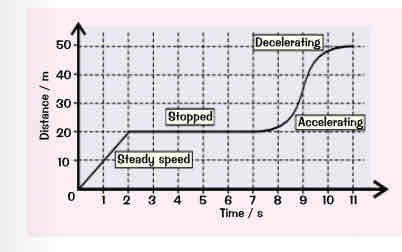
Distance time graph
The gradient (slope) at any point gives the speed of the object.
Flat sections are where it's stopped.
A steeper graph means it's going faster.
Curves represent acceleration.
A steepening curve means it's speeding up (increasing gradient).
A levelling off curve means it's slowing down (decreasing gradient).
Average speed
total distance / time taken
Speed of curved time
Find tangent
Then gradient
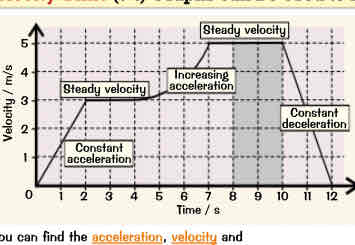
Velocity time graph
Gradient = acceleration.
Flat sections represent steady velocity.The steeper the graph, the greater the acceleration or deceleration.
Uphill sections (/) are acceleration.
Downhill sections (V are deceleration.
A curve means changing acceleration.
The area under any section of the graph (or all of it) is equal to the distance travelled in that time interval.
Forces
Contact touching
Non contact not touching
Interaction pair
Pair of equal and opposite forces acting on two different objects
Resultant force
Single force
Free body diagram
Diagram of object showing direction and size of the forces(vectors)
Zero resultant force
Stationary or moving at steady speed
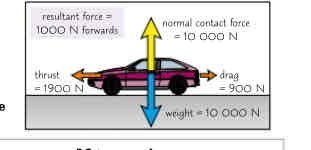
No zero resultant force
Object accelerate / deceleration
Thrust bigger than drag accelerate
Drag bigger than thrust deceleration
Normal contact force and weight balance out
Scale drawings
Find size and direction of resultant force
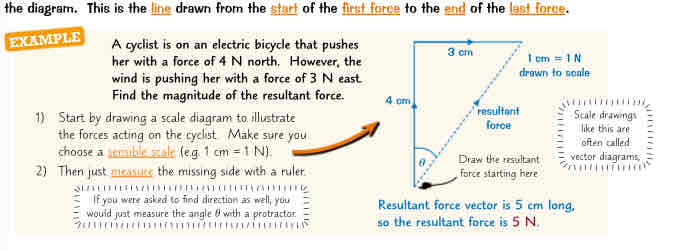
When is an object in Equilibrium
Zero resultant force
Resolve forces
Create right angle triangle at longest side
Measure the 2 lefts to find vertical and horizontal force
Newton’s first law
An object will remain stationary or at a constant velocity unless acted upon by an external force
Newton’s second law
Force acting on an object is equal to its rate of change of momentum
Resultant force = mass x acceleration
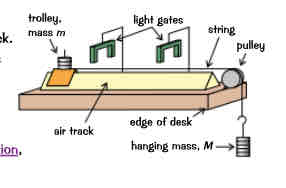
Experiment newtons second law
force acting on the trolley is equal to the weightof the hanging mass.
The hanging mass is released, pulling the trolley along the track.
By measuring the time and speed at which the trolley passes each light gate, its acceleration can be calculated.
You can increase the force acting on the trolley by moving one of the masses from the trolley to the hanging mass, and repeating the experiment.
If you plot your results on a graph of force against acceleration,you should get a straight line, showing that F= ma
Friction
Slows things down need an driving force
Driving force = to friction steady
Driving force >to friction acceleration
Driving force <to friction deceleration
Friction 2 surfaces
Terminal velocity
When objects first set off they have more driving force than friction force (resistance), so they accelera But the resistance is directly proportional to the velocity of the object — resistance or velocity. So as the velocity increases, the resistance increases as well. This gradually reduces the acceleration until the friction force is equal to the driving force so it doesn't accelerate any more. The forces are balanced (there's no resultant force). The object will have reached its maximum velocity or terminal velocity.
Terminal example
skydiver accelerates as weight due to gravity > air resistance.
But air resistance increases as velocity increases until weight = air resistance, and they reach terminal velocity.
The parachute opens and weight < air resistance, so they decelerate.
As velocity decreases, the air resistance also decreases until
weight = air resistance - they reach a new terminal velocity
Terminal velocity 2
Grater drag lower terminal velocity
Drag depends on shape and area
Open parachute more area and air restrictions
Decreasing drag makes things faster
Inertia
How difficult to change an object velocity
Interim mass = f/a
Larger internal mass requires a larger force
Newton’s third law
2 objects interact the forces they exert on each other are equal and opposite
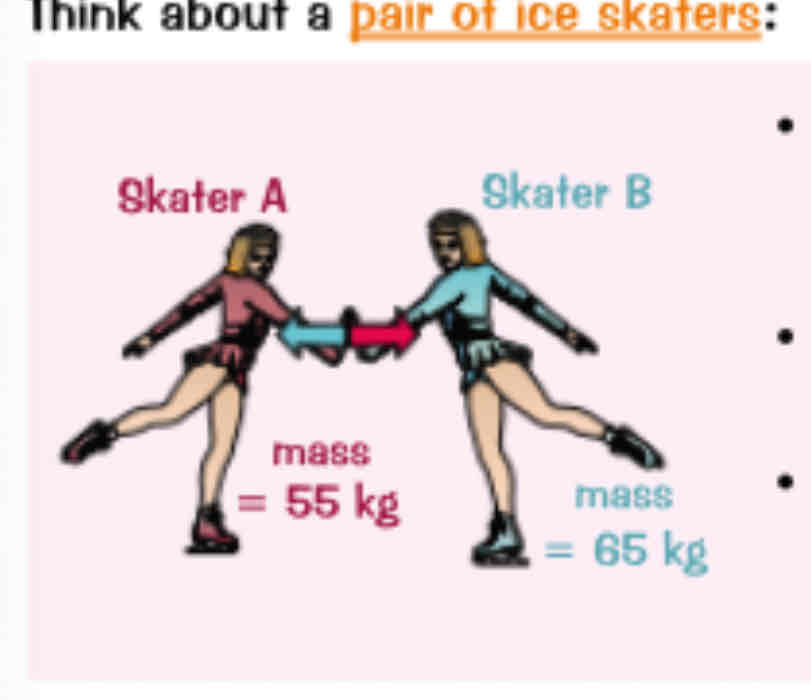
Where do they go
When skater A pushes on skater B (the 'action' force), she feels an equal and opposite force from skater B's hand (the
'reaction' force).
• Both skaters feel the same sized force, in opposite directions, and so accelerate away from each other.
Skater A will be accelerated more than skater B, though, because she has a smaller mass, so a smaller inertia -
a = F/m (from rearranging Newton's Second Law).
Object in equilibrium ain’t the same
The weight of the book pulls it down, and the normal reaction force from the table pushes it up.
This is NOT Newton's Third Law. These forces are different types and they're both acting on the book.
The pairs of forces due to Newton's Third Law in this case are:
The weight of book is pulled down by gravity from Earth (W.) and the book also pulls back up on the Earth (W.).
The normal contact force from the table pushing up on the book (R.) and the normal contact force from the book pushing down on the table (R).
Momentum
momentum (kg m/s) = mass (kg) x velocity (m/s)
examples of mom
faster momentum bigger the force
law of conservation of momentum
In a collision when no other external forces act, momentum is conserved
— i.e. the total momentum after the collision is the same as it was before it.
Momentum exa
If they join together it’s
Total momentum after = (Ma+Mb)xV
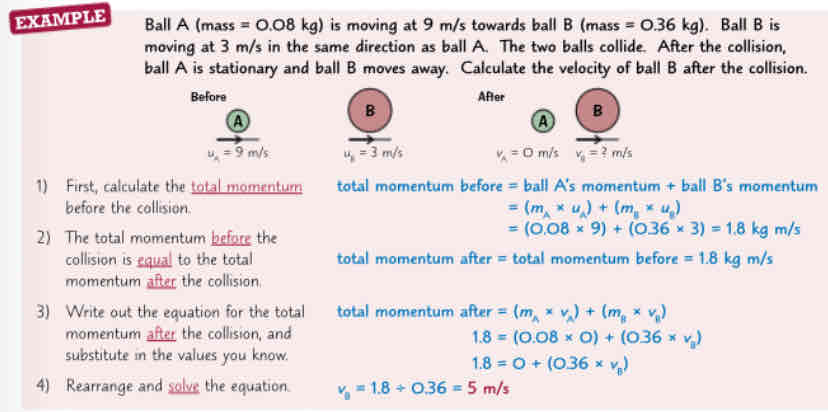
Elastic in elastic
Kinetic energy saved
Kinetic energy transfrred
Mass weight gravity
Everything has gravitational field
Gravity force is worthy
gravitational force (N)
= mass (kg) × gravitational field strength, g (N/kg)
Gravitational field makes all thing accelerate toward plant surface
Gravitational potential energy
gravitational potential energy(j)= mass(kg)Xgravitational field strength, g (N/kg)x height (m)
Kinetic energy store
kinetic energy = 0.5 x mass x(speed)2
Work done
When a FORCE makes an object MOVE, ENERGY IS TRANSFERRED and WORK IS DONE.
work done (J) = force (N) x distance (m)
Equal to energy transferred to kinetic energy if no friction
Power
Power is the rate at which energy is transferred
power (W) = work done (j) / time
Elastic and plastic
Stretch compressed or bend deformation
Returns to shape elastic
Doesn’t return to shape plastic
Hooked law
Extension of a spring (or any elastic object) is directly proportional to the force applied, as long as the limit of proportionality isn’t exceeded
f=kx
F force k spring constant x extension
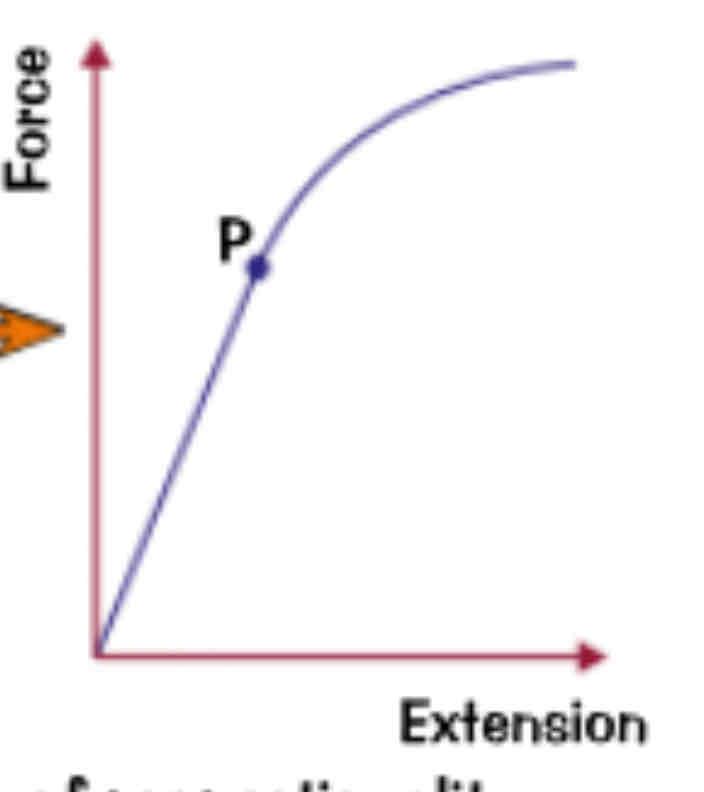
Limits of Hooke law
There’s a maximum limit to how much force can be applied before Hooke’s Law no longer applies.
• Beyond this limit (point P on the graph), the material behaves non-linearly and may undergo plastic deformation.
Fatter forces
Small forces result in linear (proportional) extension.
• Larger forces cause non-linear extension, and materials may not return to their original shape.
Spring experiment
• Attach a spring to a clamp stand and measure its original length.
• Add weights one by one to the spring, measuring its new length each time to calculate the extension (new length - original length).
• Plot a graph of force (weight) vs. extension and draw a line of best fit to observe if it follows Hooke’s Law (a straight line up to the elastic limit, then curves).
Work Done to Deform an Object:
• When a force stretches or compresses an object, it does work, transferring energy to the object’s elastic potential energy store.
• The formula for energy transferred in stretching (elastic potential energy) is
energy transferred in stretching = 0.5 x spring constant x (extension)?
Also doing area under graph
Moments
Turning effect on a force
Force on a pivot
Moment (Nm) = force (N) x distance
Larger force larger moment
Larger distance larger moment
Maximum moment push at right angles perpendicular to spanner
Levers as Force Multipliers
Levers help increase the force applied by reducing the input force needed to lift a load.
• The moment (turning effect) due to a force depends on the distance from the pivot.
• By increasing the distance from the pivot, less force is required to achieve the same moment.
• Common examples of levers include long bars, wheelbarrows, and scissors.
Gears
Gears are circular cogs with teeth that interlock to transfer rotation.
• When one gear turns, it causes the next gear to turn in the opposite direction.
• A small gear applies force to a larger gear, amplifying the moment but reducing the rotational speed.
Gear ratio
For example, if a large gear has twice as many teeth as a smaller gear, the smaller gear will turn twice for each turn of the large gear.
• The speed and moment transferred between gears depend on the ratio of their sizes.
Pressure
Pressure in a fluid is transmitted equally in all directions and it causes a force at right-angles to any surface.
Pressure force over area
Liquids are in compressible
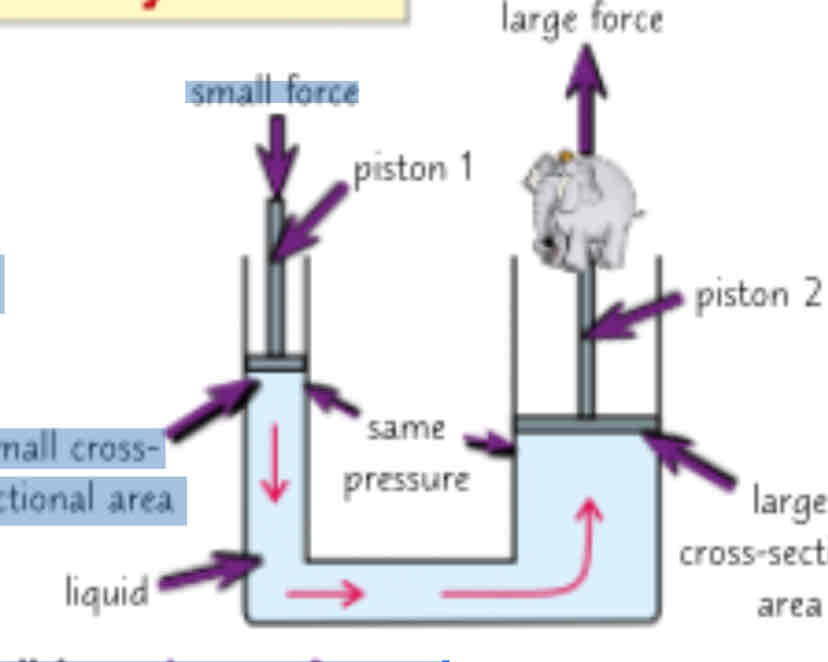
Hydraulic systems
Hydraulic systems are used as force multiplier they use a small force to produce a bigger force
The diagram to the right shows a simple hydraulic system.
The system has two pistons, one with a smaller cross-sectional area than the other.Pressure is transmitted equally through aliquid — so the pressure at both pistons is the same.
p = F ÷ A, so at the Ist piston, a pressure is
small cross-sectional area
exerted on the liquid using a small force over a small area.
This pressure is transmitted to the 2nd piston.
The 2nd piston has a larger area, and so as F = p X A, there will be a larger force.